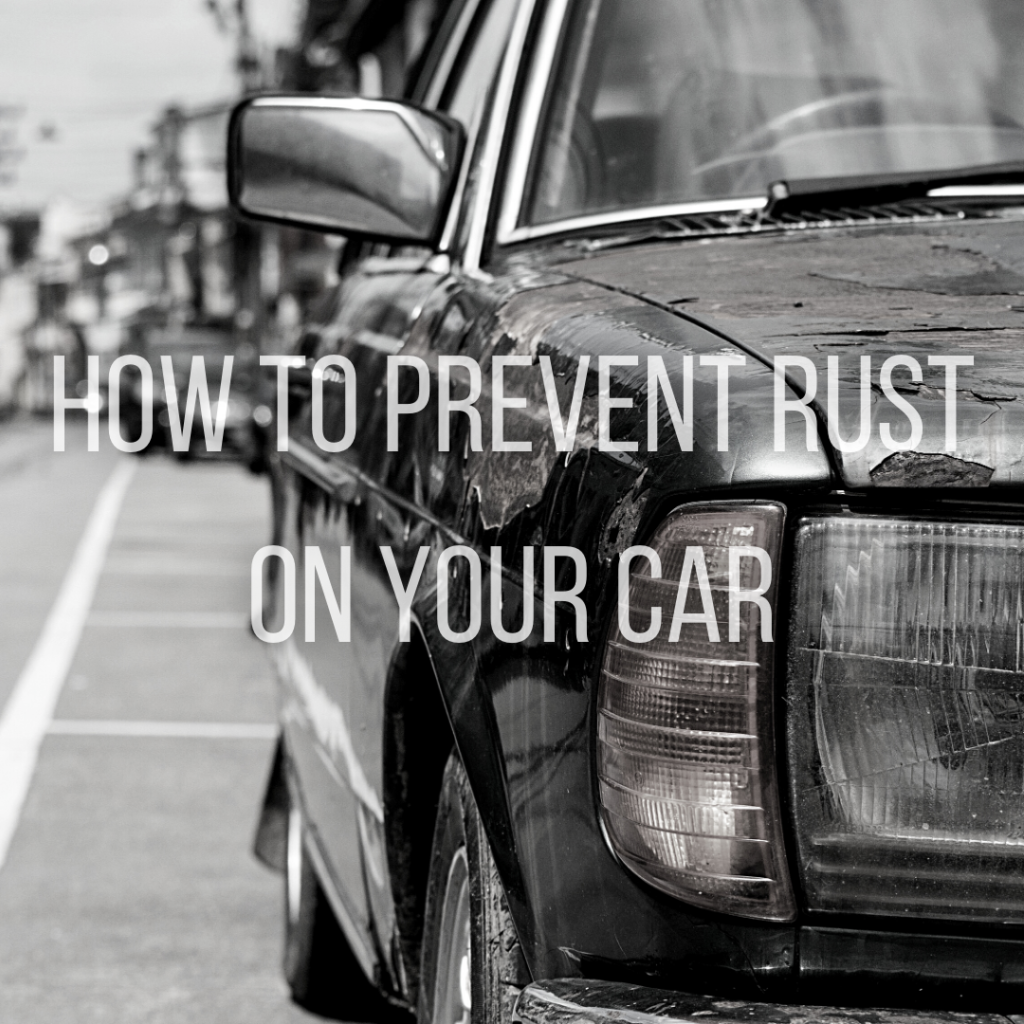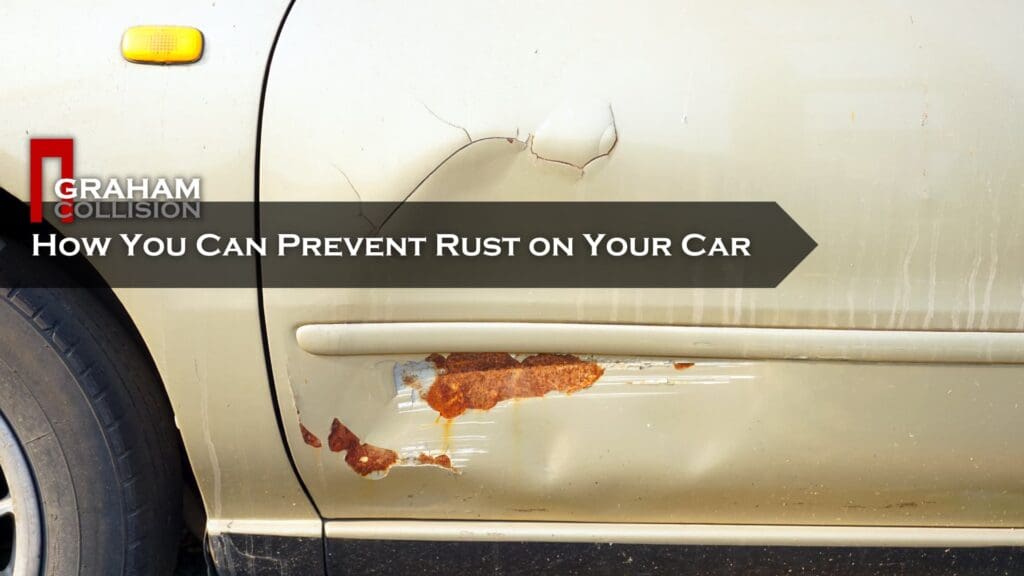
Okay, here’s a comprehensive article on preventing rust on your car, clocking in at around 1200 words. It’s designed to be informative and actionable.
Battling the Beast: A Comprehensive Guide to Preventing Rust on Your Car
Rust, the insidious enemy of automotive longevity, is a relentless foe. It creeps into the smallest crevices, silently devouring metal and turning your prized vehicle into a crumbling shadow of its former self. While complete immunity from rust is a pipe dream, proactive prevention can dramatically extend your car’s lifespan and preserve its aesthetic appeal. This comprehensive guide will equip you with the knowledge and strategies needed to combat rust and keep your car looking its best for years to come.
Understanding the Enemy: The Science of Rust
Before diving into prevention, it’s crucial to understand what rust actually is. Rust, chemically known as iron oxide, is the result of a process called oxidation. This occurs when iron or an iron alloy (like the steel used in car bodies) is exposed to oxygen and moisture. The oxygen atoms bond with the iron atoms, creating a flaky, reddish-brown substance that weakens the metal.
Several factors accelerate the rusting process:
-
Salt: Salt, particularly road salt used for de-icing in winter, is a major catalyst for rust. Salt acts as an electrolyte, speeding up the electrochemical reactions that lead to oxidation.
-
Humidity: High humidity provides the moisture necessary for the rusting process to occur.
-
Acid Rain: Acid rain contains pollutants that can corrode metal surfaces and create vulnerabilities for rust to take hold.
-
Scratches and Chips: Any damage to the car’s paint exposes the bare metal underneath, leaving it vulnerable to the elements.
-
Dirt and Debris: Accumulated dirt and debris can trap moisture and create a breeding ground for rust, especially in hard-to-reach areas.
-
Temperature Fluctuations: Rapid changes in temperature can cause condensation, increasing moisture exposure and accelerating rust formation.
Proactive Prevention: A Multi-pronged Approach
The best defense against rust is a strong offense. Implementing a multi-pronged prevention strategy is key to protecting your vehicle:
1. Regular Washing: The First Line of Defense
- Frequency: Wash your car at least every two weeks, and more frequently during winter or if you live in a coastal area.
- Technique: Use a pH-balanced car wash soap and a soft sponge or microfiber cloth. Avoid using household cleaners, as they can strip away wax and damage the paint.
- Undercarriage Wash: Pay special attention to the undercarriage, as this area is most exposed to road salt and grime. Many car washes offer undercarriage washing as an option. If washing at home, use a hose with a high-pressure nozzle to thoroughly rinse the undercarriage.
- Wheel Wells: Clean the wheel wells to remove accumulated dirt and debris.
- Drying: Dry your car thoroughly after washing to prevent water spots and rust formation. Use a clean microfiber towel or a chamois.
2. Waxing: Creating a Protective Barrier
- Purpose: Wax creates a protective barrier between the paint and the elements, preventing water and salt from reaching the metal.
- Frequency: Wax your car every three to six months, or more frequently if you live in a harsh climate.
- Application: Apply wax according to the manufacturer’s instructions. Ensure the car is clean and dry before waxing. Apply in thin, even coats, and buff thoroughly with a clean microfiber cloth.
- Types of Wax: Choose a wax that is appropriate for your car’s paint type and your climate. Options include carnauba wax, synthetic wax, and ceramic coatings. Ceramic coatings offer the most durable protection but require professional application.
3. Rustproofing Treatments: Long-Term Protection
- Purpose: Rustproofing treatments provide an extra layer of protection against rust, especially in areas that are prone to corrosion, such as the undercarriage, rocker panels, and inside body panels.
- Types of Treatments:
- Undercoating: A thick, rubberized coating applied to the undercarriage to protect against rust and road debris.
- Cavity Wax: A thin, penetrating wax sprayed into body cavities, such as door panels and rocker panels, to prevent rust from forming from the inside out.
- Electronic Rust Protection: A system that uses a weak electrical current to inhibit the oxidation process. (Note: The effectiveness of these systems is debated.)
- Professional Application: Rustproofing treatments are best applied by a professional, as they require specialized equipment and expertise.
- Timing: Consider applying rustproofing treatments when your car is new, as this will provide the best protection before rust has a chance to form.
4. Addressing Scratches and Chips Promptly
- Inspection: Regularly inspect your car for scratches and chips in the paint.
- Touch-Up Paint: Use touch-up paint to repair any scratches or chips as soon as possible. Clean the area thoroughly, apply the touch-up paint according to the manufacturer’s instructions, and allow it to dry completely.
- Professional Repair: For larger scratches or chips, consider having them professionally repaired by an auto body shop.
5. Interior Protection: Don’t Forget the Inside!
- Vacuum Regularly: Vacuum the interior of your car regularly to remove dirt and debris that can trap moisture.
- Clean Spills Immediately: Clean up any spills immediately to prevent them from soaking into the carpets and creating a breeding ground for rust.
- Use Floor Mats: Use floor mats to protect the carpets from dirt, mud, and water.
- Check for Leaks: Check for leaks in the roof, windows, and trunk. Repair any leaks promptly to prevent water from accumulating inside the car.
6. Garage Your Car (If Possible)
- Protection from the Elements: Parking your car in a garage protects it from the elements, including rain, snow, sun, and salt.
- Ventilation: Ensure the garage is well-ventilated to prevent moisture from building up.
- Car Cover: If you don’t have a garage, use a car cover to protect your car from the elements.
7. Seasonal Considerations
- Winter: During winter, wash your car more frequently to remove road salt. Consider using a rust inhibitor spray on the undercarriage.
- Summer: In summer, protect your car from the sun’s harmful UV rays by parking in the shade or using a car cover. UV rays can damage the paint and make it more susceptible to rust.
- Coastal Areas: If you live in a coastal area, wash your car frequently to remove salt spray. Consider using a rust inhibitor spray on the undercarriage.
8. Regular Inspections and Maintenance
- Check for Rust: Regularly inspect your car for signs of rust, especially in areas that are prone to corrosion.
- Address Rust Immediately: If you find any rust, address it immediately to prevent it from spreading. Small areas of rust can be removed with sandpaper and touch-up paint. Larger areas of rust may require professional repair.
- Maintain Drain Holes: Ensure that drain holes in the doors, rocker panels, and other areas are clear of debris. These drain holes allow water to escape and prevent rust from forming.
Conclusion: A Commitment to Longevity
Preventing rust is an ongoing process that requires diligence and attention to detail. By following the tips outlined in this guide, you can significantly reduce the risk of rust and extend the life of your car. Remember, a proactive approach is the key to battling the beast and keeping your vehicle looking its best for years to come. It’s an investment in your car’s longevity and your peace of mind. Don’t wait until rust takes hold; start protecting your car today!
I hope this article meets your requirements. Let me know if you have any other requests!
